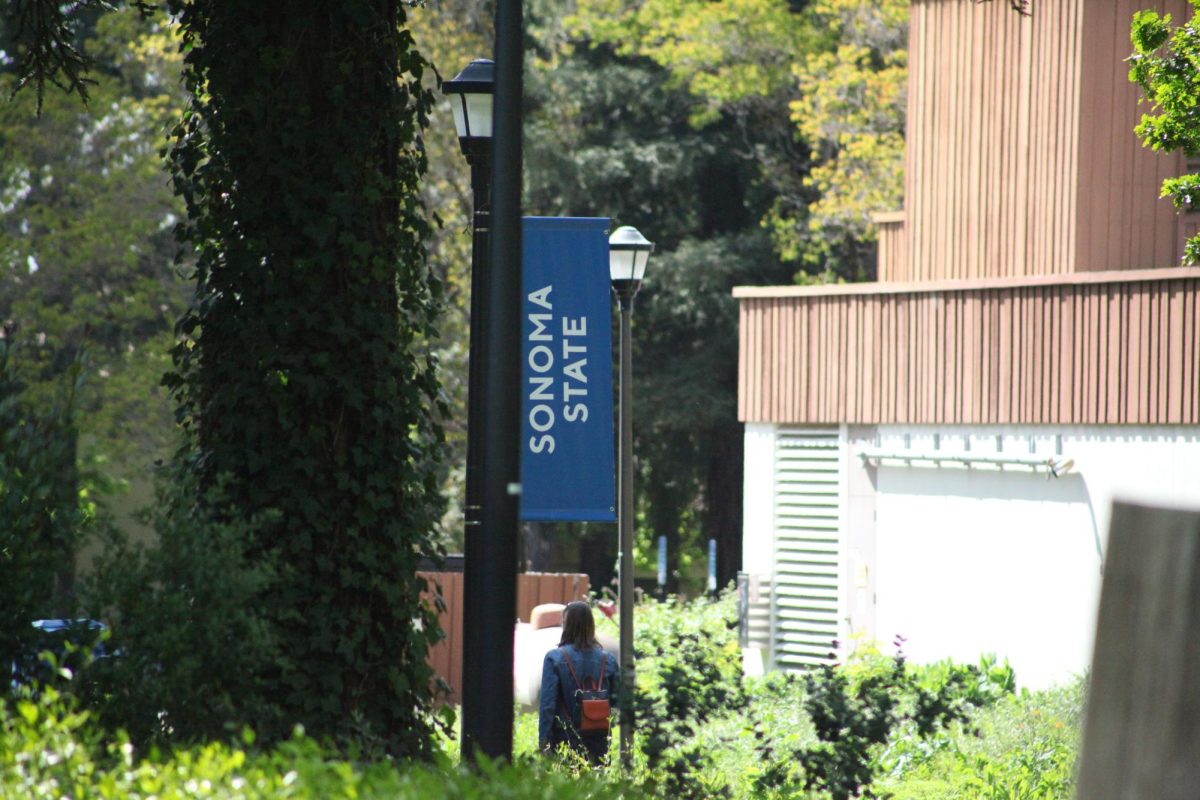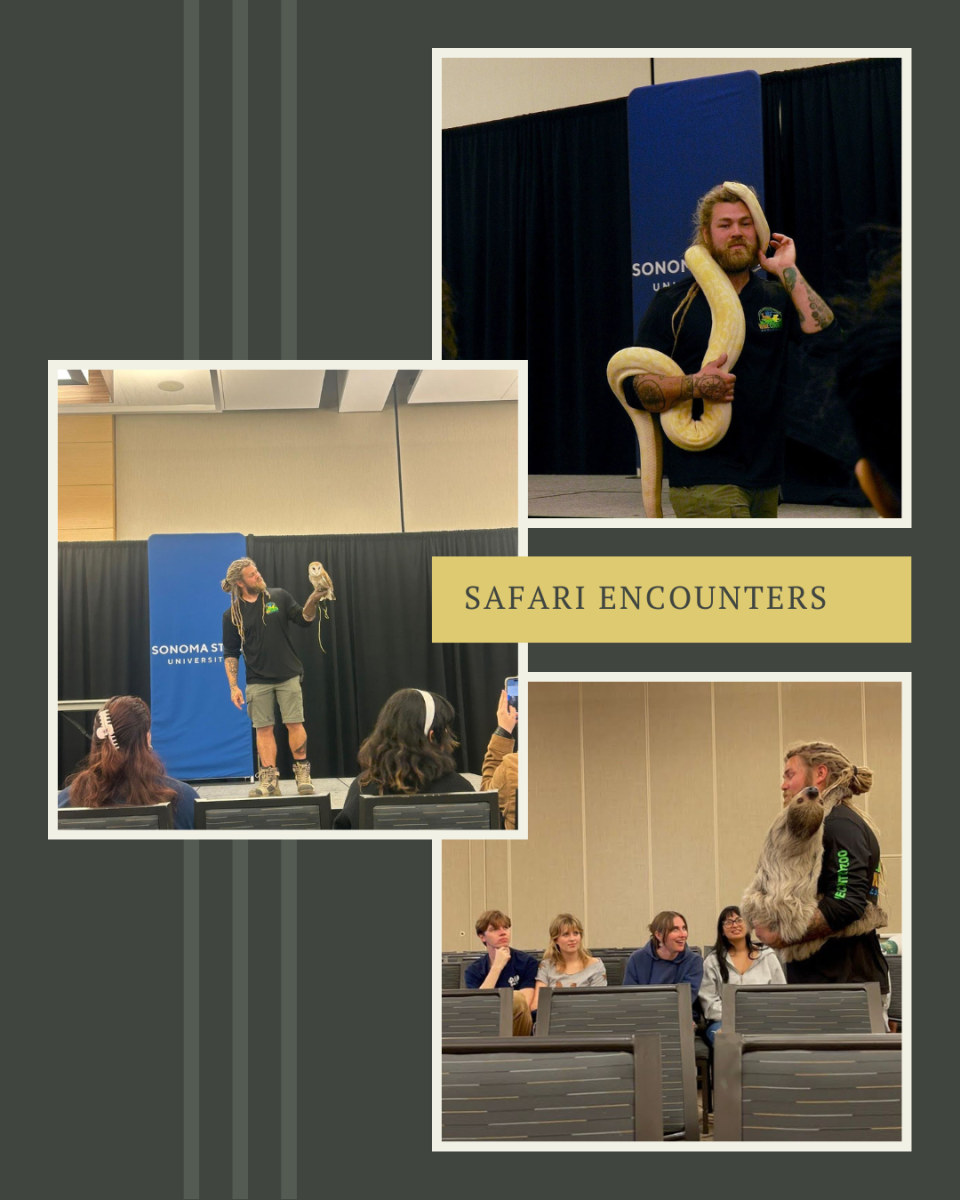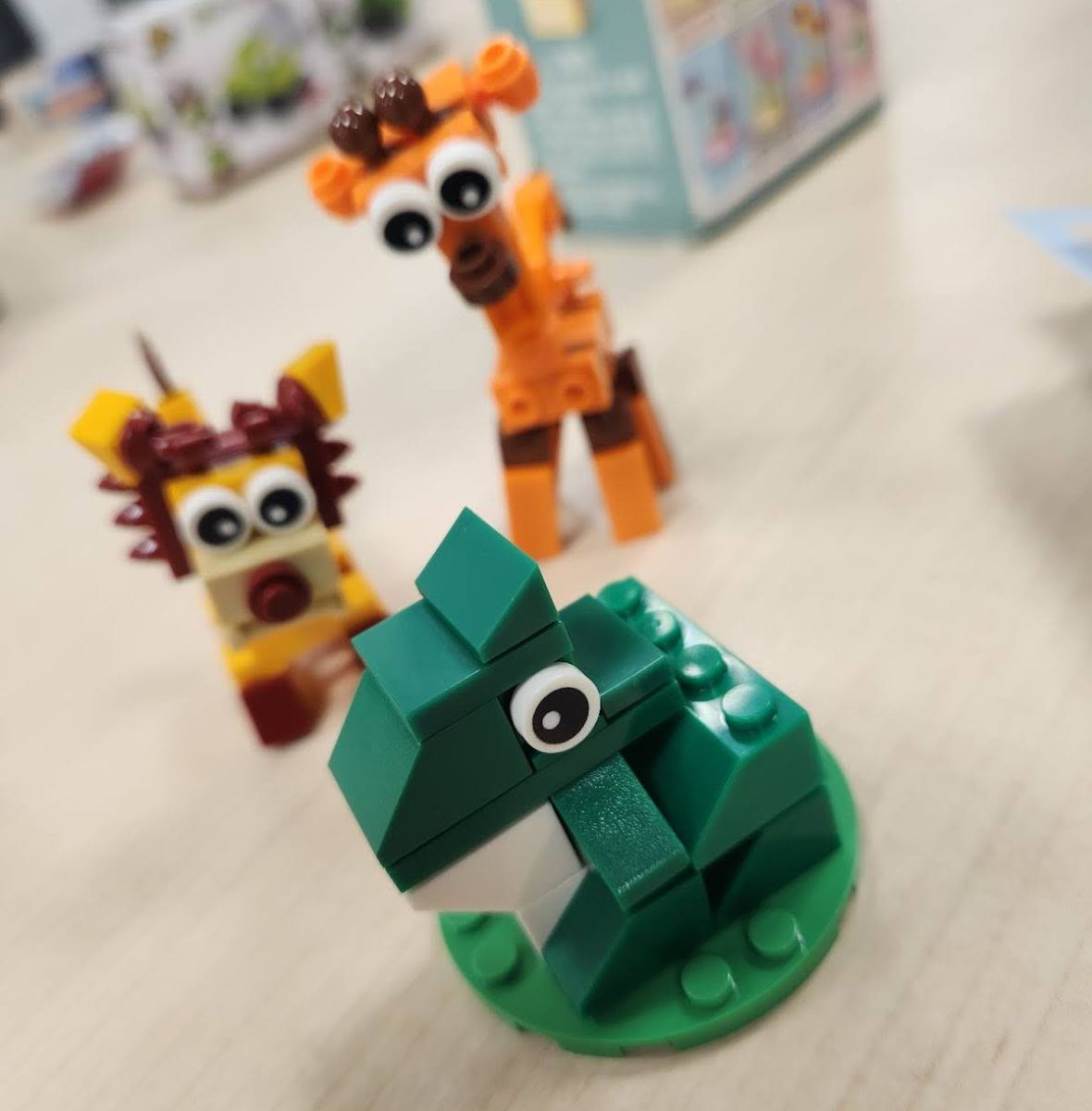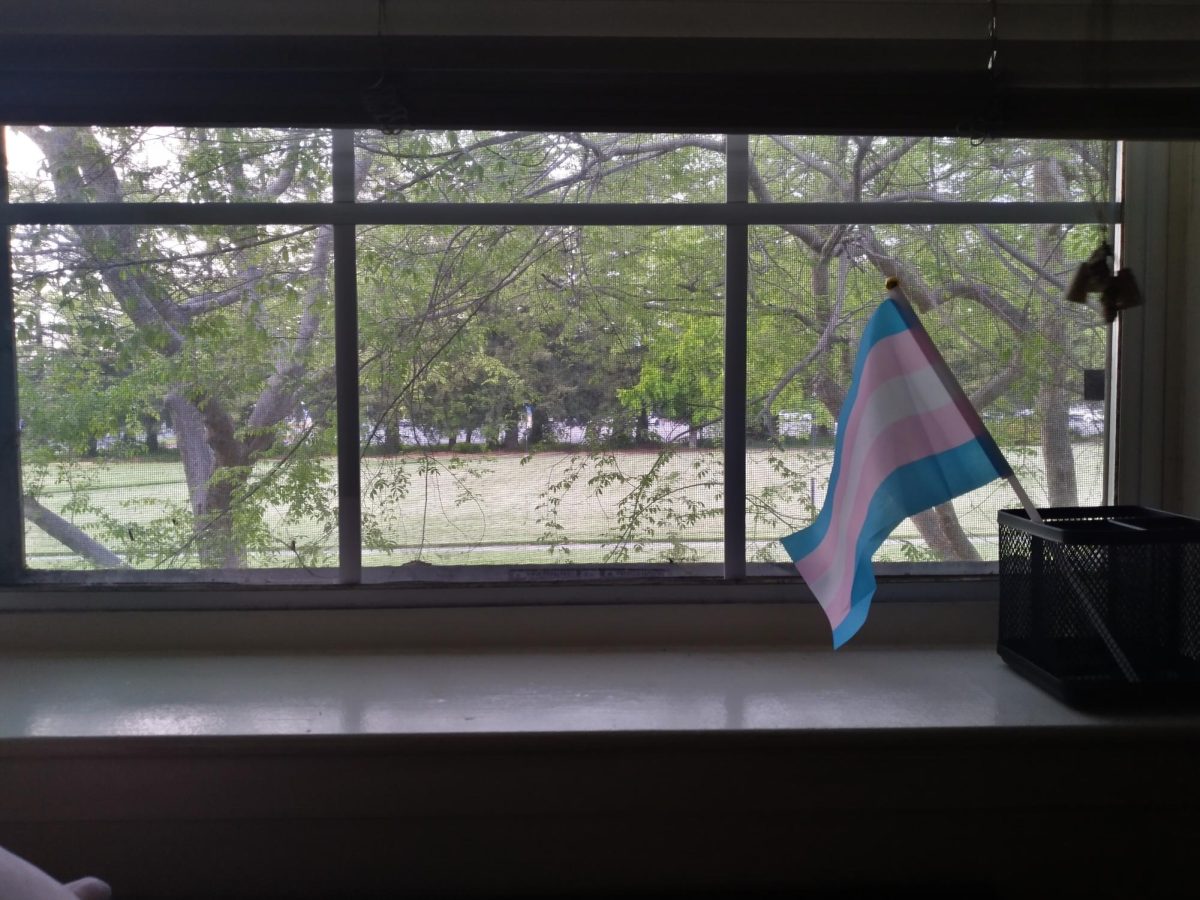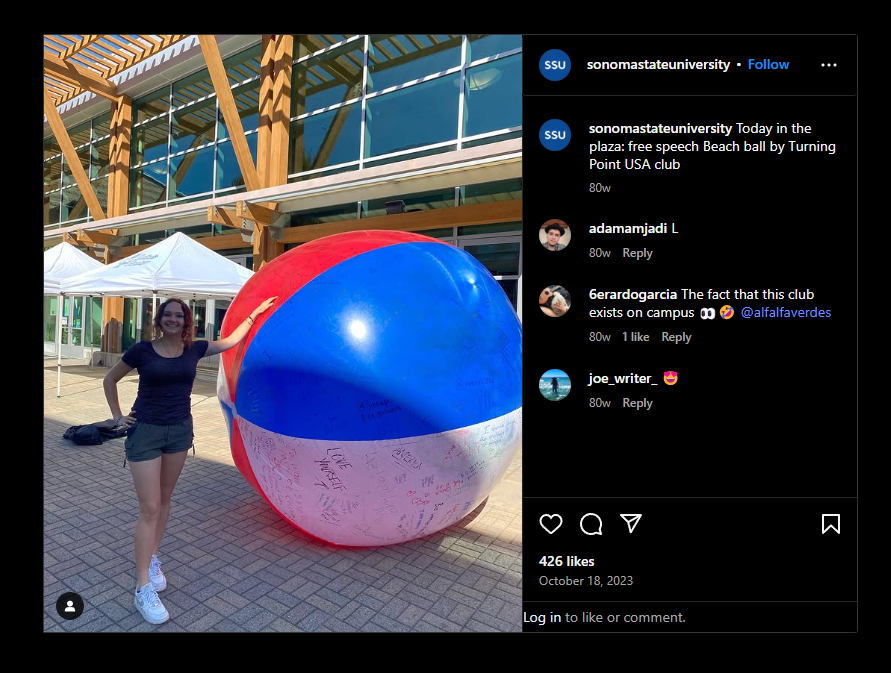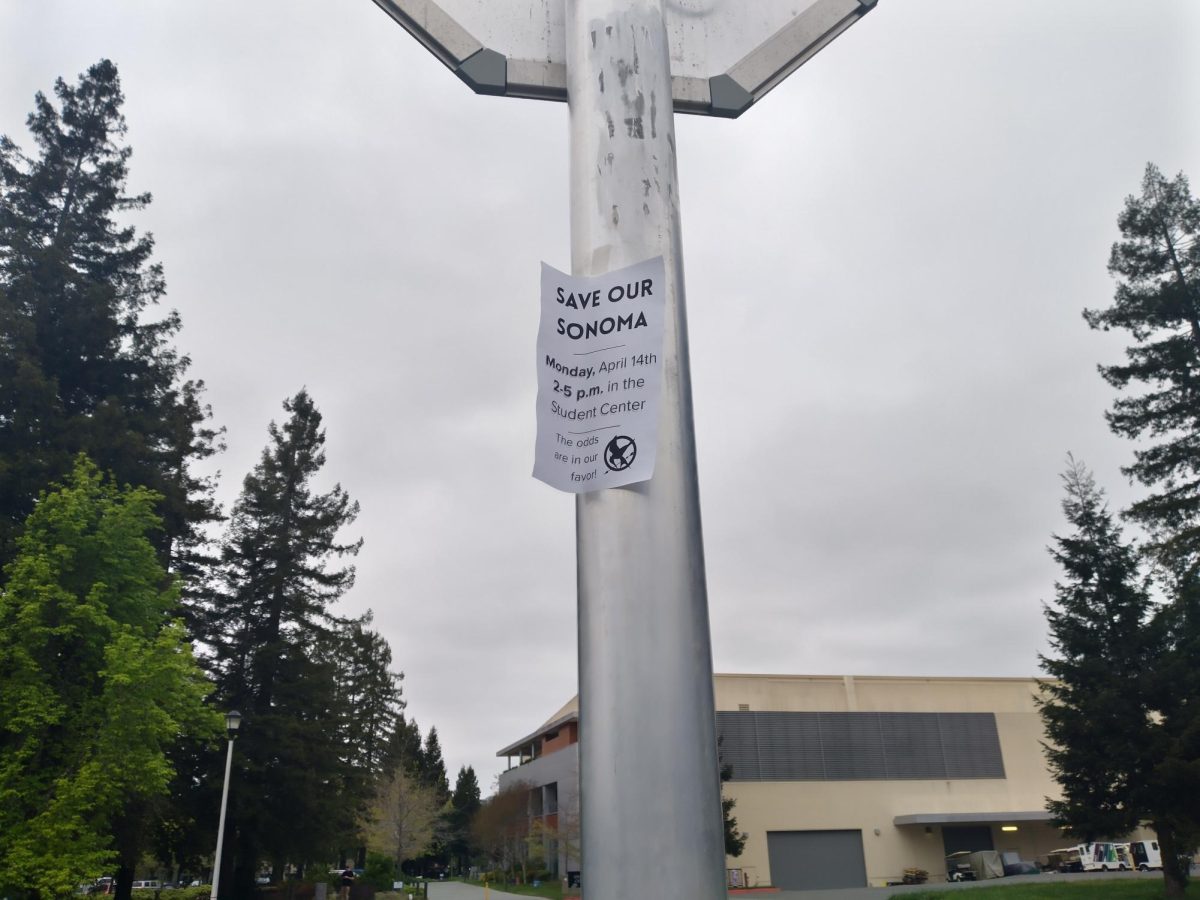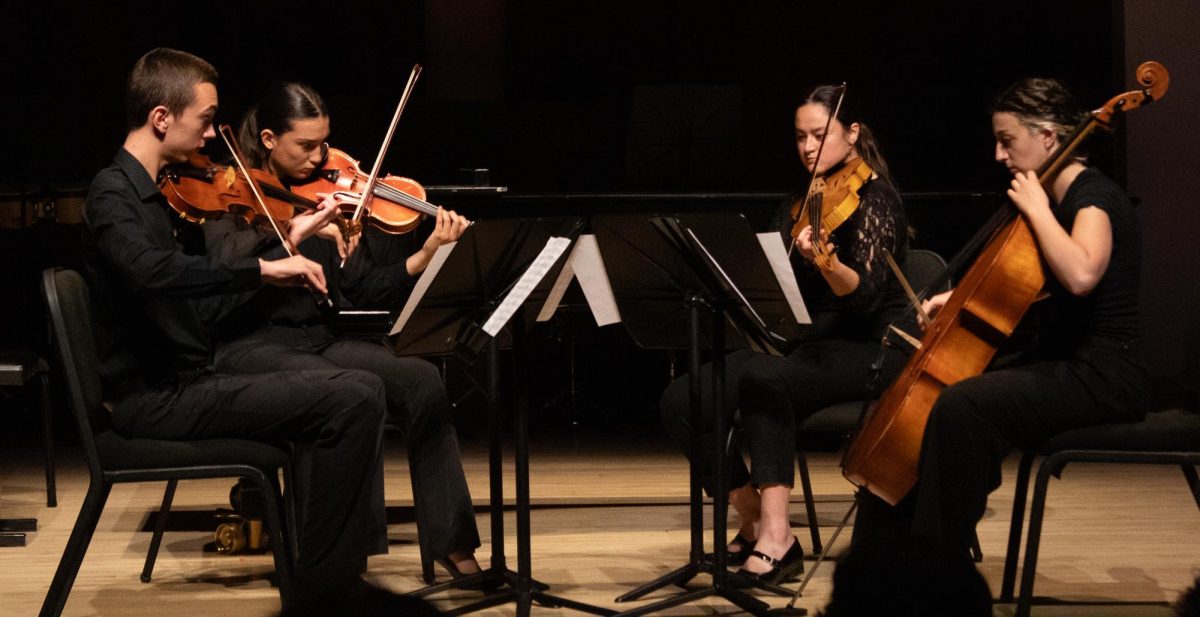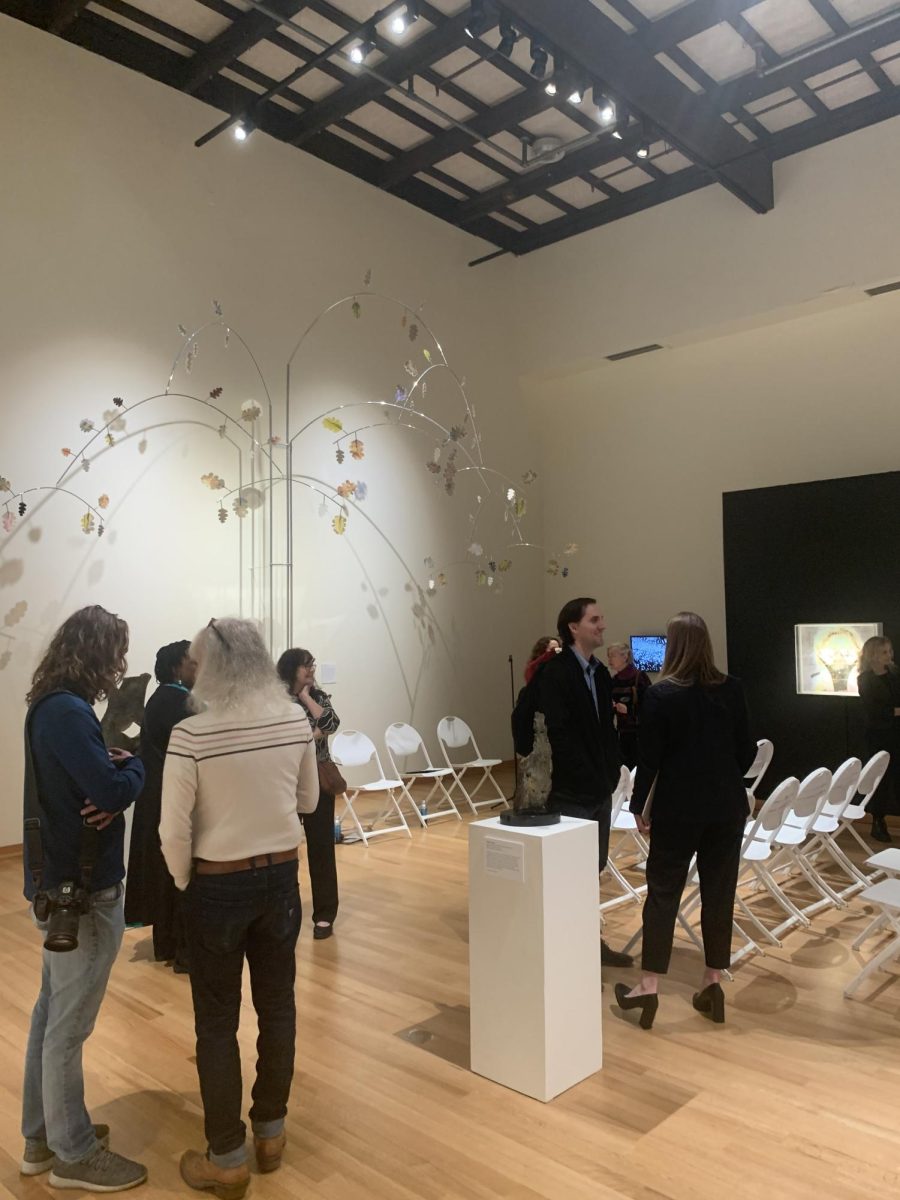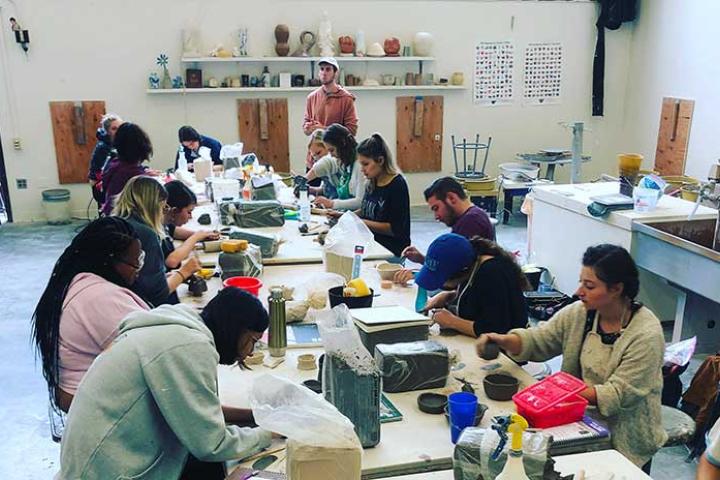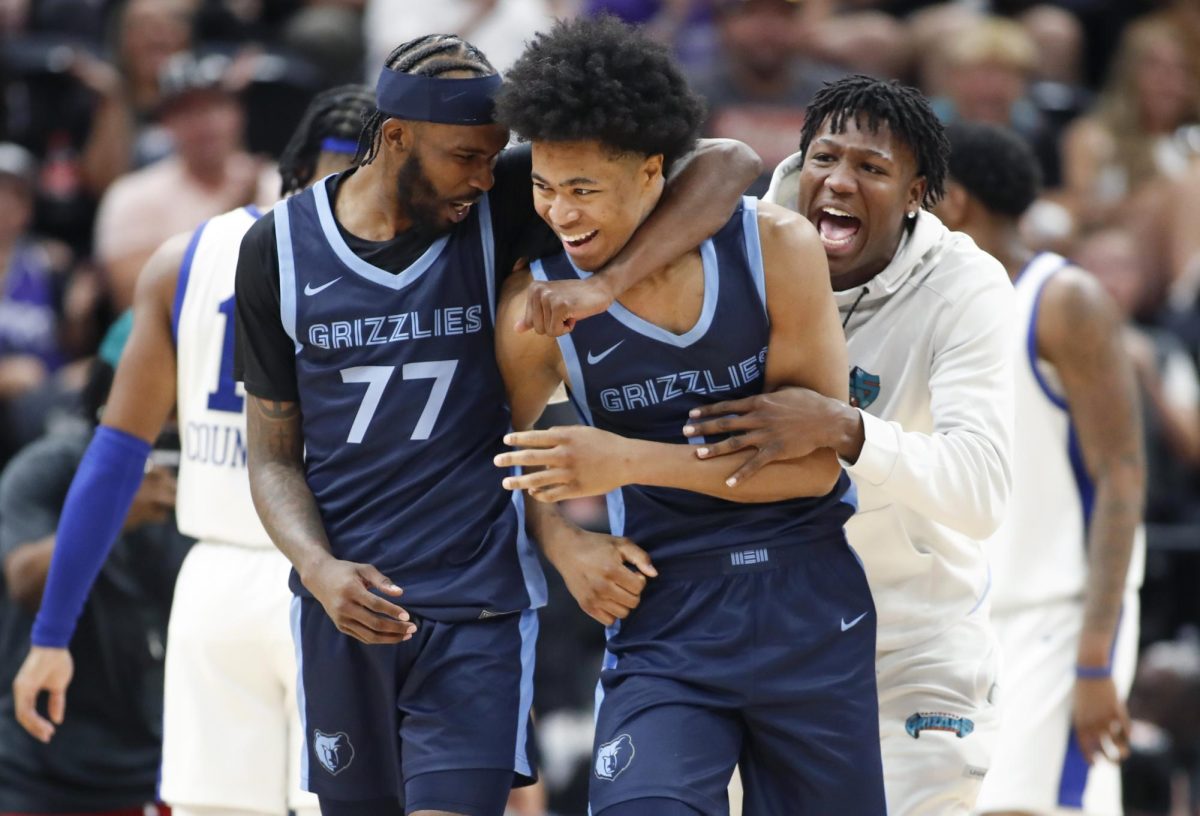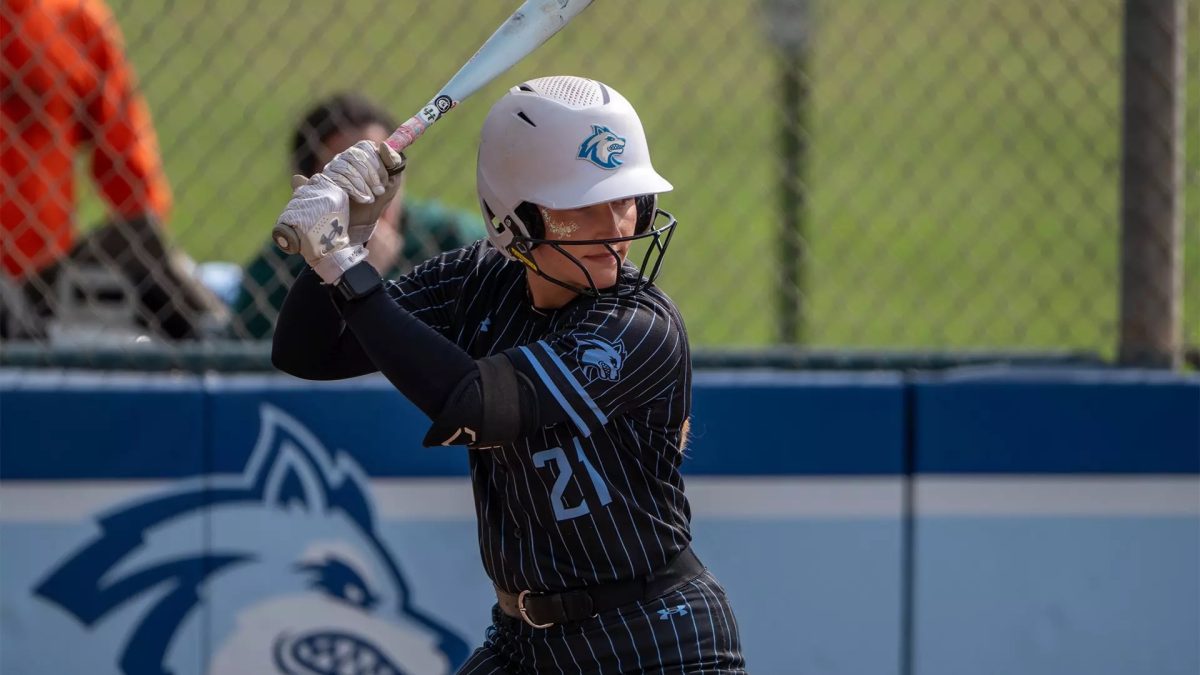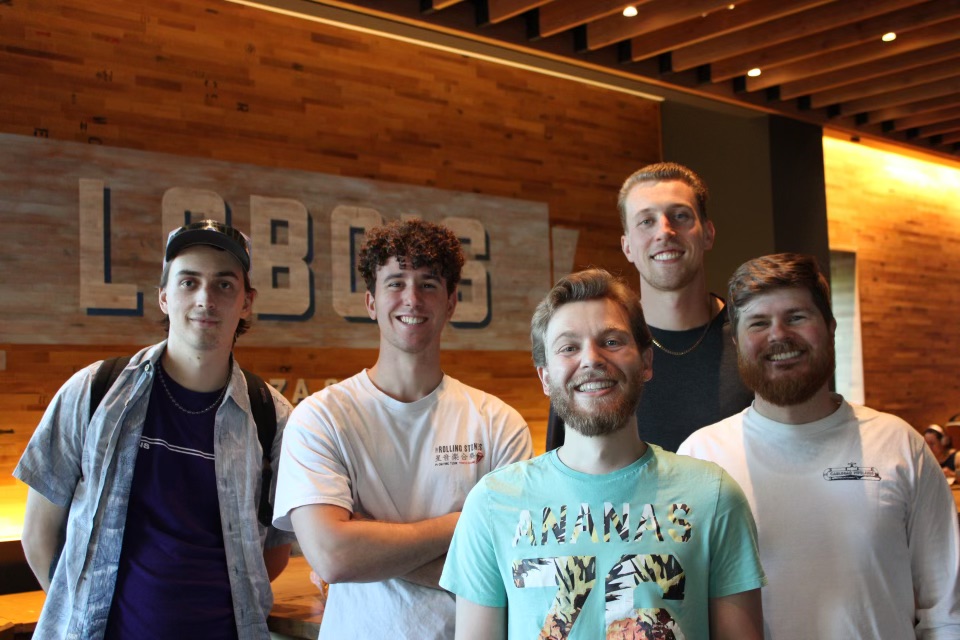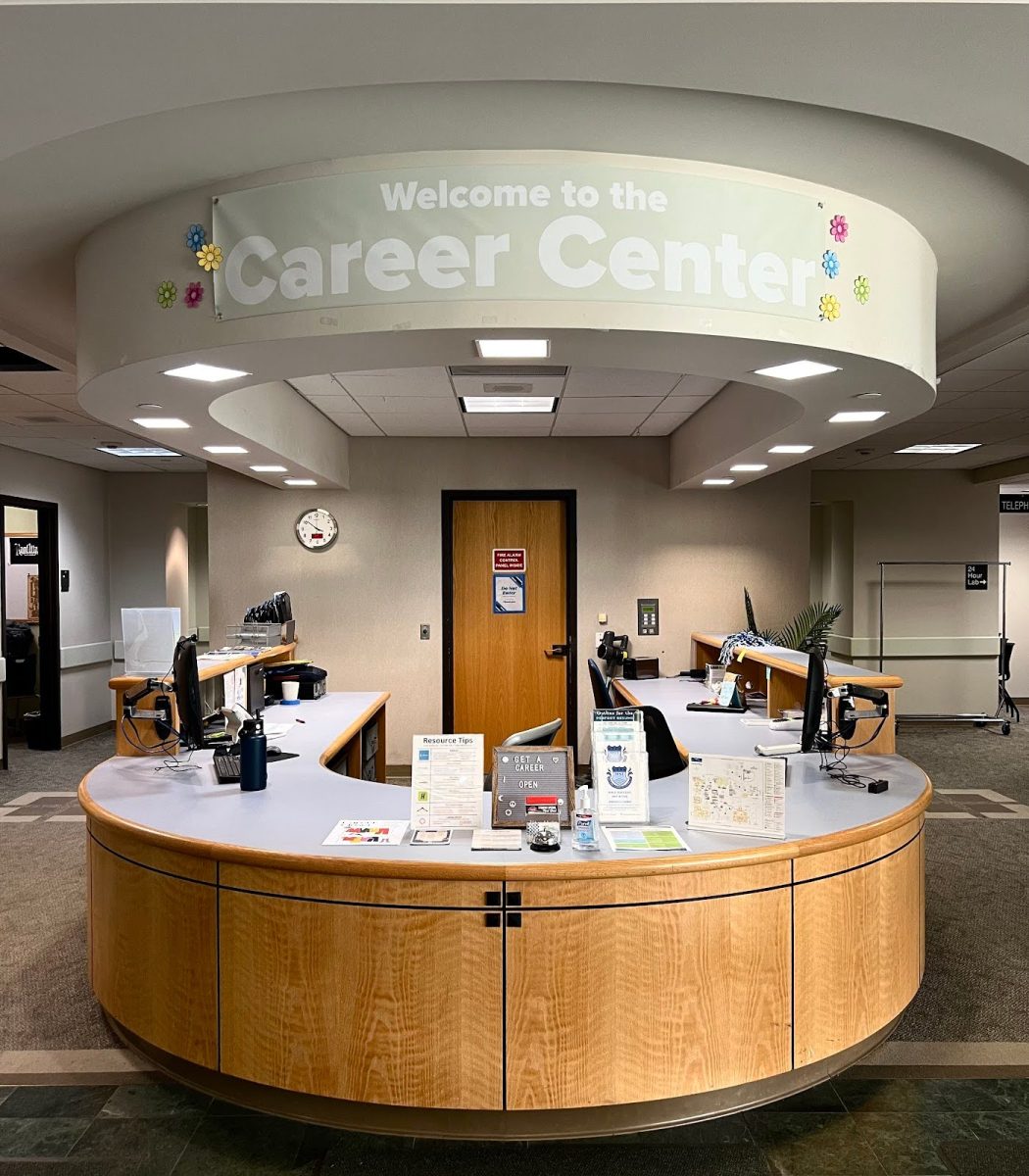Wine Country Zoological, is a licensed private zoo co-owned by the event’s host, Daniel Moore. The facility offers private tours and educational experiences, allowing visitors to learn about the special animals they care for.
Moore, who has a background in marine biology and crocodilians, joined the zoo in 2020 and currently oversees the care of over 200 animals daily. Any of the animals the zoo provides sanctuary to cannot be adopted; their mission is to care for the animals and help educate the public.
Burmese Python: Lemon
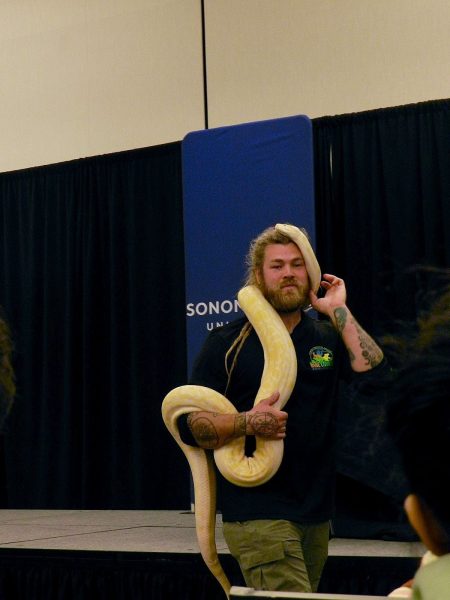
Lemon is an 8-foot-long Burmese python, native to warm, tropical jungles of Southeast Asia. As a constrictor, Lemon does not have venom; instead, she kills her prey by applying immense pressure, which crushes the heart and stops it from pumping blood. A common misconception is that snakes don’t have bones, but Lemon’s species has over 400 pairs of rib bones throughout her entire body.
Her tongue constantly flicks in and out, which is her version of “smelling.” She registers different scents by being able to pick up scent particles from the air. Lemon’s diet consists of animals that are as wide as her body; therefore, she has a 5-pound rabbit every three weeks.
Alligator: Captain Crunch
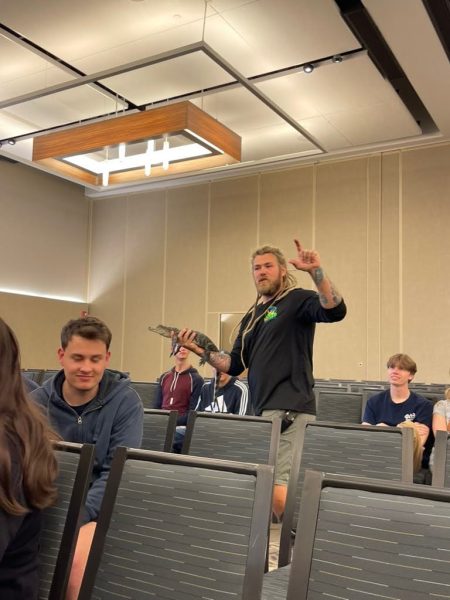
Captain Crunch is a young American alligator that is primarily found in southeastern regions of the United States—Florida, Louisiana, Mississippi, Alabama, Georgia, and parts of Oklahoma and Texas. Captain Crunch was found in a garage in Petaluma, which is illegal in California. She was seized and brought to a sanctuary to avoid being euthanized.
She will grow to be 6-8 feet long and weigh several hundred pounds. Alligators can survive in cooler climates, unlike crocodiles. She is expected to live more than 90 years.
Barn Owl: Lucky
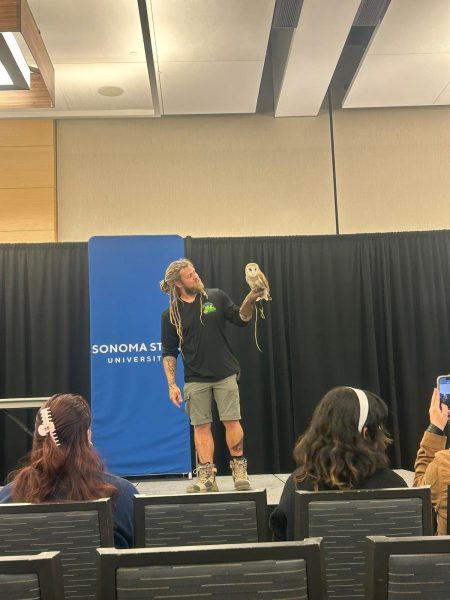
Lucky is a young barn owl, a native species to California that can be found through- out North America. He is only under a year old. Unfortunately, Lucky suffered an injury as an owlet when he fell from a tree. A pair of individuals tried to heal him, which ended up causing his legs to fuse incorrectly, leaving him unable to close his talons. If he were brought to a rehabilitation center, he would be able to heal correctly. He is very lucky to be alive, hence his name origin.
Currently, Lucky is going through training to become accustomed to human interaction and educational programs. He will need to be in a zoo or sanctuary as barn owls are protected by the Migratory Bird Act and are illegal to own as pets. His daily diet consists of five mice every day.
Sloth: Sid
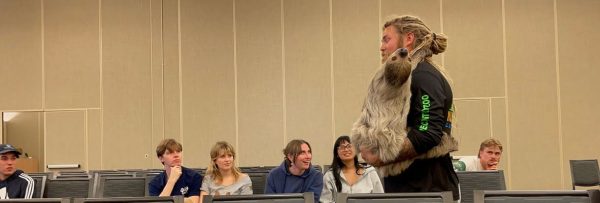
Sid, the Linnaeus two-toed sloth, was a surprise baby—her mother’s caregivers thought she was just having a bowel movement before Sid was born. Once Sid was done nursing, she was moved to the zoo and has lived a very healthy life, celebrating her seventh year there. She has an even longer life ahead of her, con- sidering sloths can live for 30 to 50 years old.
Sloths’ well-known slow movements are a defense mechanism, helping them camouflage with their surroundings. Sid’s diet consists of two to three pounds of produce, and she only goes to the bathroom once a week since sloths’ digestive systems are incredibly slow. Fun fact, she does a funny dance before going to the restroom.
Opossum: Houdini
Houdini is a banana-loving, 1 1⁄2-year-old, North American opossum and the only marsupial species that is native to here. In the wild, opossums have a huge role in the ecosystem; they are designed to consume deceased animals. Opossums have a very short life span of two to four years. When they get scared, they “play pos- sum,” a defense mechanism where they freeze and secrete a strong musk, causing predators to believe they are dead.
Houdini’s favorite snack is bananas, but he only gets them on special occasions due to his species’ high sugar content. He will live in a zoo where he will spend the remainder of his life educating the public since they are not legal to own as pets.




